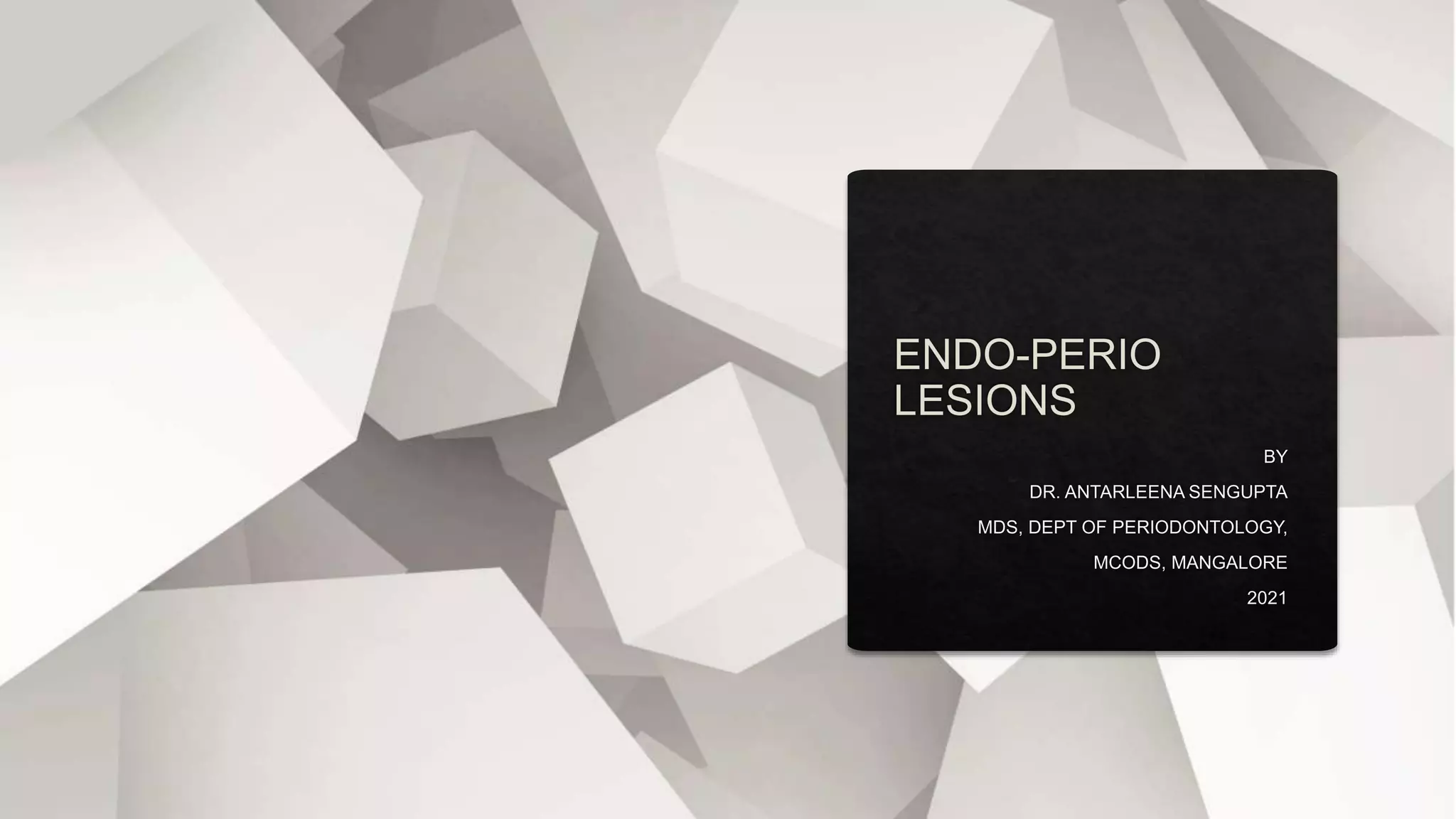This document discusses endo-perio lesions, which involve both the dental pulp and surrounding periodontium. It describes the various types of lesions, including primary endodontic, primary periodontal, endo-secondary perio, and perio-secondary endo lesions. It also discusses diagnostic factors, treatment approaches, and case studies involving endo-perio lesions from 2014 to 2020. The optimal treatment is described as endodontic therapy preceding periodontal treatment to support healing, with regenerative procedures and adjuncts like ozone gas showing promise.




































































